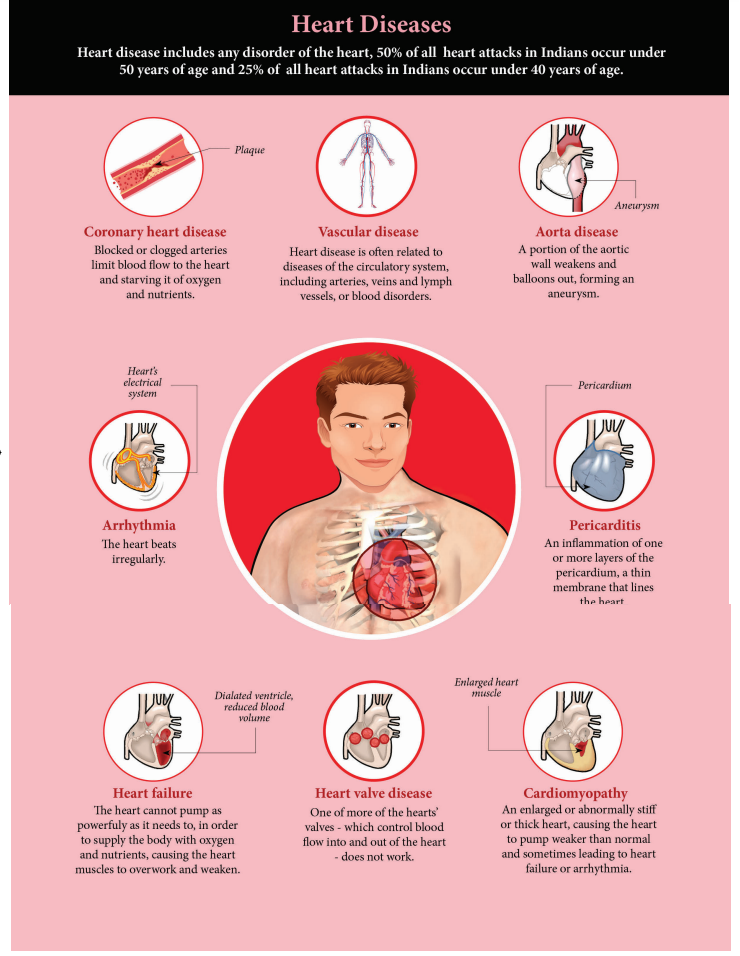
Common Circulatory System Disorders and Their Symptoms
The circulatory system, also known as the cardiovascular system, is a complex network of blood vessels, the heart, and blood that ensures the transport of oxygen, nutrients, and waste products throughout the body. When this intricate system faces disruptions, it can lead to various disorders and diseases. In this comprehensive article, we will explore some common circulatory system disorders, their causes, and the symptoms associated with each condition.
1. Hypertension (High Blood Pressure)
Hypertension is a prevalent circulatory system disorder characterized by consistently elevated blood pressure levels. It can result from various factors, including genetics, diet, lifestyle, and underlying medical conditions.
Symptoms:
- Often asymptomatic (no noticeable symptoms until complications arise)
- Frequent headaches
- Fatigue
- Blurred vision
- Shortness of breath
- Chest pain
- Irregular heartbeat
2. Coronary Artery Disease (CAD)
Coronary Artery Disease, also known as coronary heart disease, occurs when the blood vessels supplying the heart muscle (coronary arteries) become narrowed or blocked. This condition can lead to chest pain (angina) or heart attacks.
Symptoms:
- Chest pain or discomfort (angina)
- Shortness of breath
- Fatigue
- Sweating
- Nausea
- Radiating pain to the left arm, neck, jaw, or back (in the case of a heart attack)
3. Stroke
A stroke is a sudden interruption of blood flow to the brain, often due to a blood clot or a ruptured blood vessel in the brain. Strokes can result in severe brain damage or even death.
Symptoms:
- Sudden numbness or weakness in the face, arm, or leg (especially on one side of the body)
- Sudden confusion, trouble speaking, or difficulty understanding speech
- Severe headache with no known cause
- Trouble walking, dizziness, loss of balance, or lack of coordination
4. Heart Failure
Heart failure occurs when the heart’s pumping function is impaired, leading to an inadequate supply of blood and oxygen to meet the body’s needs.
Symptoms:
- Fatigue and weakness
- Shortness of breath, especially when lying down
- Swelling in the legs, ankles, feet, or abdomen (edema)
- Rapid or irregular heartbeat
- Persistent cough or wheezing
- Reduced ability to exercise
5. Peripheral Artery Disease (PAD)
Peripheral Artery Disease is a condition where narrowed arteries reduce blood flow to the limbs, typically the legs. It is often caused by atherosclerosis, a buildup of fatty deposits in the arteries.
Symptoms:
- Painful cramping in the legs, particularly during physical activity (intermittent claudication)
- Numbness or weakness in the legs
- Sores on the legs or feet that don’t heal
- Coldness in the lower leg or foot
- Changes in skin color or shiny skin on the legs
6. Deep Vein Thrombosis (DVT)
Deep Vein Thrombosis is the formation of a blood clot (thrombus) in a deep vein, most commonly in the legs. If a clot breaks free and travels to the lungs, it can cause a pulmonary embolism, a life-threatening condition.
Symptoms:
- Swelling in the affected leg
- Pain or tenderness in the leg (often in the calf)
- Warmth and redness over the affected area
- Leg fatigue or heaviness
- Sudden shortness of breath and chest pain (if a clot has traveled to the lungs)
7. Aortic Aneurysm
An aortic aneurysm is an abnormal bulging or ballooning of the aorta, the largest artery in the body. Aneurysms can occur in various parts of the aorta, including the abdomen and chest.
Symptoms:
- Often asymptomatic until the aneurysm ruptures
- Sudden, severe abdominal or chest pain (indicating a rupture)
- Pulsating mass in the abdomen (abdominal aneurysm)
- Hoarseness, difficulty swallowing, or shortness of breath (if an aneurysm presses on nearby structures)
8. Arrhythmias
Arrhythmias are irregular heart rhythms that can occur due to various factors, including heart disease, electrolyte imbalances, and congenital conditions.
Symptoms:
- Palpitations (feeling of skipped beats or rapid heartbeat)
- Dizziness or lightheadedness
- Fainting (syncope)
- Fatigue
- Shortness of breath
Conclusion
The circulatory system plays a vital role in maintaining overall health and well-being, and any disruption or disorder within this system can have serious consequences. Recognizing the symptoms associated with common circulatory system disorders is crucial for early diagnosis and treatment. If you experience any of the aforementioned symptoms or suspect a circulatory system issue, it is essential to consult a healthcare professional promptly. Timely intervention can significantly improve the prognosis and quality of life for individuals affected by these conditions. Additionally, adopting a heart-healthy lifestyle, including a balanced diet, regular exercise, and stress management, can help reduce the risk of many circulatory system disorders.




